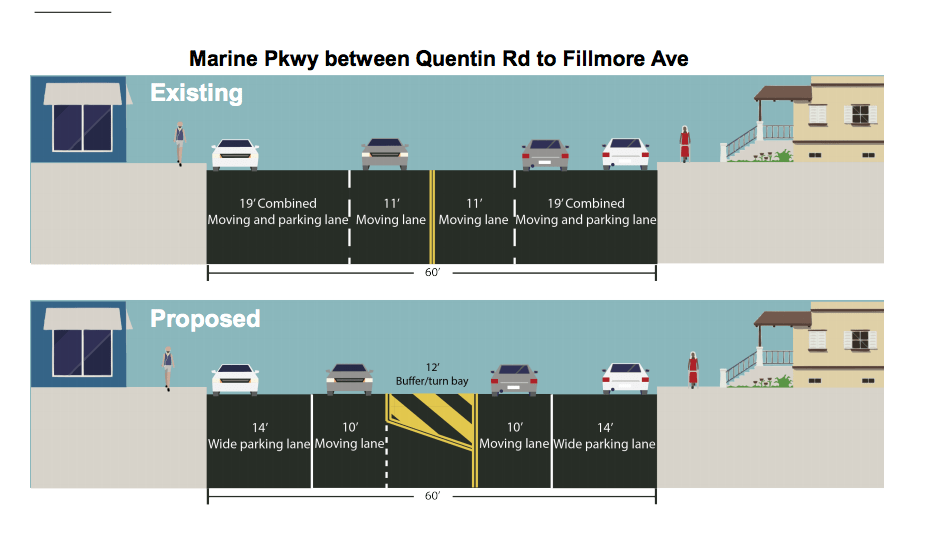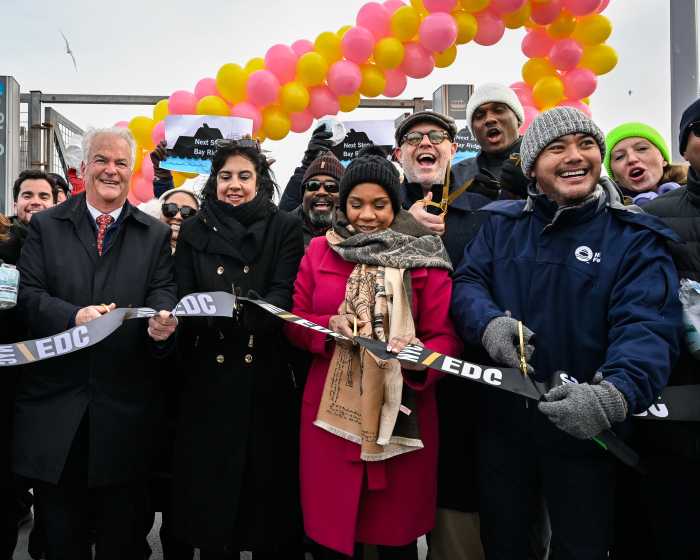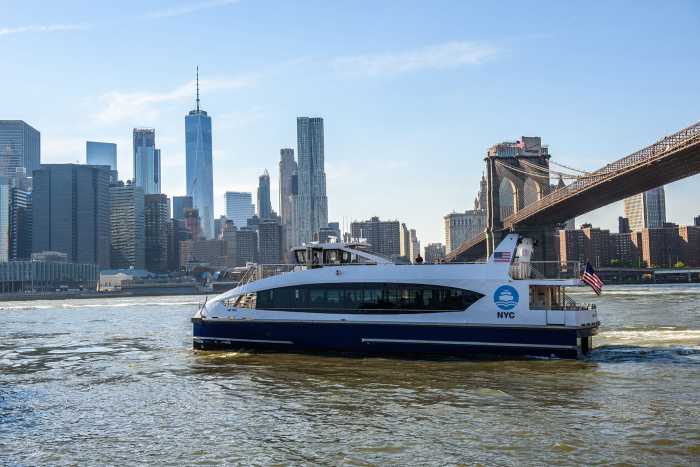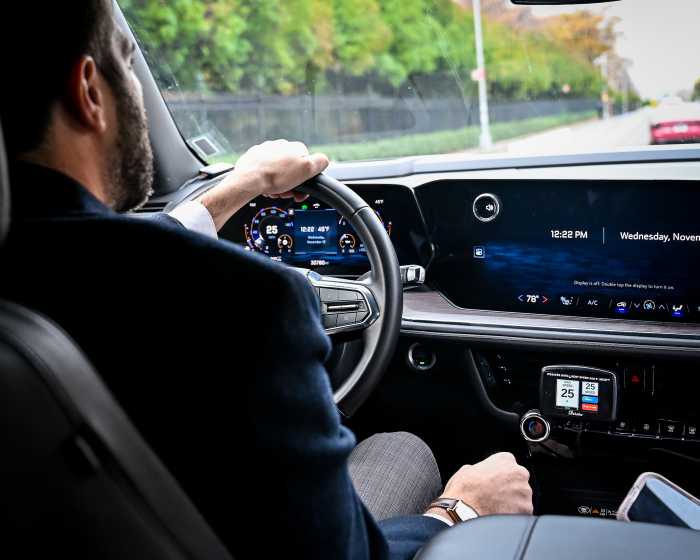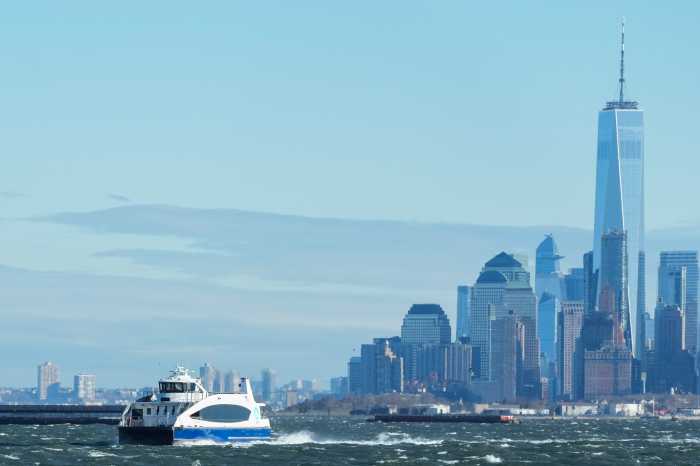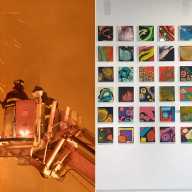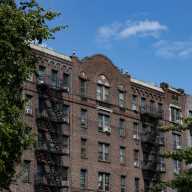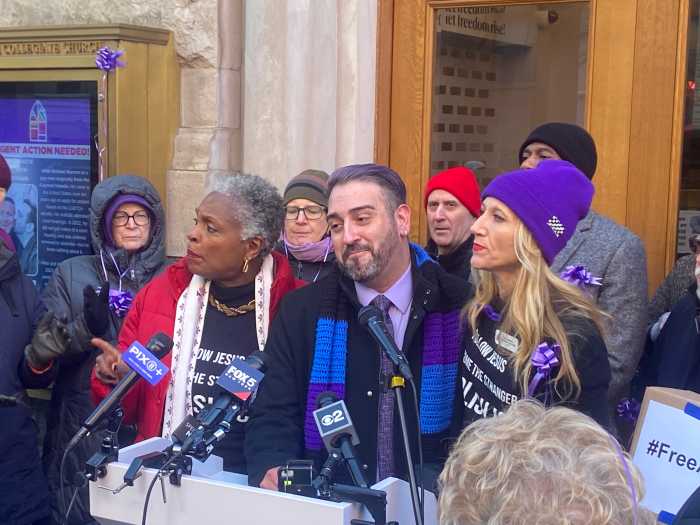Locals treated the city’s plan to reduce speeding along Marine Parkway by eliminating a driving lane to a cold reception at a meeting of the Marine Park Civic Association on Nov. 19, and the group’s head honcho suggested transit officials take their proposal back to the drawing board.
“If the community– which is the people who are on the block – don’t think its right, then we have to find another solution,” said Bob Tracy, president of the Marine Park Civic Association.
The Department of transportation wants to eliminate two 19-foot combined moving and park lanes on both sides of the north-south thoroughfare between Quentin Road and Fillmore Avenue, converting them into 14-foot-wide parking-only lanes, while shrinking the remaining driving lanes from 11 feet to 10 feet wide. The agency would then install a 12-foot buffer zone separating north and southbound motorists, which they hope will cause drivers to maintain safe speeds, while also preventing double parking and increasing sight lines.
“I think with this design, it makes it a little bit more predictable to be able to see cars double parking if it’s one lane, rather than getting into the other lane and having to overtake a vehicle,” said Makenna Olson, a representative for the Department of Transportation.
The proposed changes resulted from a traffic study requested by Councilman Alan Maisel (D-Marine Park), who fired off a letter last year demanding the Department of Transportation explore ways to slow traffic along the bustling transit artery, claiming his office had received numerous complaints from residents about the neighborhood speedway.
However, when reps for the city transit officials proposed their traffic-calming scheme before a few dozen locals at the community meeting on Tuesday, only two people raised their hands in support of the plan, while the remainder suggested the agency take less drastic measures to reduce speeding.
“Change the timing on the lights, that’s the reasonable thing to do,” one attendee yelled from the crowd.
Other residents suggested speed cameras and speed bumps as alternative ways to combat speeding, which has existed in its current configuration for as long as anyone can remember, according to Tracy.
“We are talking about a street that looked the same way 100 years ago, so we are not going to make a decision tonight,” said Tracey. “The general consensus is we need to talk about it and see if there are any better options for Marine Parkway.”
Claudette Workman, a representative from the Department of Transportation, said that speed cameras are slotted for high-crash areas and commented that changing the timing of traffic lights – which are calibrated for on-peak and off-peak hours – would result in complaints of traffic congestion. Olson said the department had yet to assess the viability of speed bumps in Marine Park.


